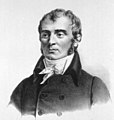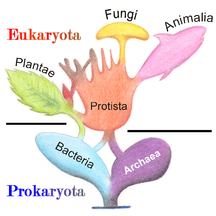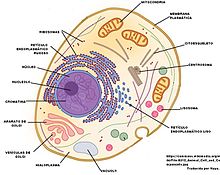Cell theory
The cell theory is a fundamental part of biology that explains the constitution of plants on the basis of cells, the role that these have in the constitution of life and in the description of the main characteristics of vegetables . The first cells must have been possessed by simple organisms capable of optimal adaptation, this is how several postulates have been based on empirical experiments, where they try to replicate primitive conditions, such as low oxygen index, excessive amount of carbon dioxide, acidic environments, among others, through which one seeks to know the adaptation and proliferation of organisms, in order to reach a common ancestor from which all history can be derived. All these records are established by a countless complementary studies to the current knowledge of this theory which have corroborated the theories prior to them and have supported new information of great relevance for people today. The most accepted hypothesis to explain the biological origin of eukaryotic cells establishes that certain types of prokaryotes needed to work in a group, from which consequently each one was special socializing and acquiring a function that would later structure a complete organism.
In general, it is established that the ancestor from which all the classifications arise and which presents common characteristics is called a protobiont, since it will be endowed with the necessary tools for genetic transcription and translation; From this, due to various more specialized characteristics, three models of prokaryotes are derived, known as archea, eukaryotes and bacteria, which remained so for a long period of time, in which these organisms adapted their metabolic process to the intense terrestrial conditions. Many of these definitions could not be established immediately since it was assumed that matter was made up of molecules and it could not be concluded what the basic structural units were. As for the realization of the attempts of the cells by To search for its survival, other cellular stages were generated that describe it:
Anaerobic heterotrophs:
Needing organic compounds available in the environment, with the passage of time these conditions came to be limited, which is why a certain group of cells had to look for other adaptations, from which they are derived.
Photosynthesis:
Some of these primitive cells manage to manufacture organic substances by fixing and reducing CO2, taking the first steps for photosynthesis, an autotrophic feeding medium, in photosynthesis water is used as an electron donor, this gives O2 originates, this process will be essential, through which the change from a reducing atmosphere to an oxidizing one is achieved.
Cyanobacteria:
They specialize in the use of available carbon dioxide for their food, in such a way that their source of resources would represent a high index and that would allow the free development of the other group of cells, and within which others came to adapt them as an aerobic respiration for its metabolism and consequently for a heterotrophic nutrition of an aerobic nature.
After several of these processes, a more intense evolutionary stage began to be generated so that the cells that had survived the precarious conditions at the beginning began to develop mechanisms that allow them to take advantage of the resources that were being presented, in this way In this way they began to synthesize the most basic compounds, turning them into more complex substances classified as organic, in this way their development began to take place with greater efficiency. From this synthesis, the substances that stand out the most for presenting themselves precariously are nucleotides and amino acids, the which could be synthesized through subsequent experiments and were considered simple molecules, the association of these allowed the formation of more complex molecules such as proteins, which defined the characteristics of living beings at the compositional level.
Eukaryotic cells:
The most relevant characteristic of them is the presence of a defined nucleus. According to evolution and cell theory, these types of cells tried to phagocytose prokaryotic cells but failed.
Background
At the beginning of the 17th century, Marcello Malpighi carried out his research on plant organization and determined a small structure that would later be named in reference to Hooke's proposal with "cellulae" but due to the low foundations that these presented, a controversy was created about whether the cell was what was defined as a real being or a cavity. Consequently, it was possible to establish that what was observed was what is now known as the cell wall, with Once this topic was concretized, it was possible to establish that the cell was complete and complex, which fostered interest in the cell and nuclear membrane.
Another aspect that contributes as a promoter of approaches that are now theoretical and applicable, is the achievement of mitochondria that are based on vestigial evidence closely related to DNA and the construction of proteins, of which endosymbiotic adoption can be highlighted.
Cellular principles
The concepts of living matter and cell are closely linked to biology since it encompasses all the precepts that compose it and the relationship and function that they have within the ecosystem and, at the cellular level, in an organism. Living matter it is distinguished from the inert (inanimate matter) by its ability to metabolize and self-perpetuate, in addition to having the structures that make possible the occurrence of these two functions; If the matter metabolizes and self-perpetuates itself, it is said to be alive, which is what functionally comprises the components for the purpose that each living being presents. Many of these organisms are capable of fulfilling various functions depending on their needs, but their cells present the same structures, since it is at macromolecular scales where it is possible to differentiate what really defines each one.
Several scientists postulated numerous principles to give it a proper structure:
- Carl Woese in 1980 established a biological capacity of primitive cells to perform genome functioning activities and was of this foundation that could be classified as:Bacteria, urcariots and archaeas. He came to obtain this knowledge because he centered his studies in the so-called 16s ribosome RNA, which is a sequence that is in all living beings, with slow evolution where evolutionary changes can be traced.
- Robert Hooke, observed a sample of cork under the microscope detail, Hooke did not see cells as we now know them, he observed that the cork was formed by a series of transparent cell, ordered in a manner similar to the cells of a hive; to refer to each of these cells, he uses the word cell. Later this process would be carried out by other scientists with microscopic evaluation so that the mode of operation of each of these formed cells could be correctly visualized.
- Anton van Leeuwenhoek, using simple microscopes, made observations by laying the foundations of microscopic morphology. He was the first to make important discoveries with microscopes manufactured by himself. From 1674 until his death he made numerous discoveries. It introduced improvements in microscope manufacturing and was the precursor of experimental biology, cell biology and microbiology.
- At the end of the centuryXVIII, Xavier Bichat, gives the first definition of tissue (a set of cells with similar shape and function). Later, in 1819, Meyer will give the name of Histology to a book by Bichat entitled General anatomy applied to Physiology and Medicine.
- Two German scientists, Theodor Schwann, histologist and physiologist, and Jakob Schleiden, a botanist, realized from a certain fundamental community in the microscopic structure of animals and plants, in particular the presence of centers or nuclei, which the British botanist Robert Brown had recently described (1831). They published the work together Microscopic research on the concordance of the structure and growth of plants and animals (1839). They established the first and second principle of historical cellular theory:
Everything in living beings is composed of cells or products secreted by cells.First principle of cell theory.
The cell is the basic unit of organization of life.Second principle of cellular theory
- Another German doctor Rudolf Virchow, interested in the cellular specificity of the pathology (only some classes of cells appear to be involved in each disease) explained what we should consider the third principle:
Every cell has originated from another cell, by division of this cell.Third principle of cellular theory
- Now we are in a position to add that the division is by bipartition, because despite certain appearances, the division is always, at the bottom, binary. The principle was popularized by Virchow in the form of an aphorism created by François Vincent Raspail, «omnis cellula e cellula». Virchow ended with the speculations that would bring down the cell from a hypothetical blastema. Its postulate, which implies the continuity of cellular stretches, is at the origin of the observation by August Weismann of the existence of a germline, through which it is established in animals (including man) the continuity between parents and children and, therefore, of the modern concept of biological heritage.
- The cellular theory was debated throughout the nineteenth century, but it was Pasteur who, with his experiments on the multiplication of the unicellular microorganisms, where it was demonstrated that one cell was from another already existing, gives rise to its blunt and definitive acceptance.
- Santiago Ramón and Cajal managed to unify all the tissues of the body in cellular theory by demonstrating that the nerve tissue is formed by cells. His theory, called “neuronism” or “doctrine of the neuron”, explained the nervous system as a conglomerate of independent units. He was able to demonstrate it thanks to the staining techniques of his contemporary Camillo Golgi, who perfected cell observation by using silver nitrate, identifying one of the nerve cells. Cajal and Golgi received the Nobel Prize in 1906.
- Together with these postulates and subsequent researches, it was possible to define the characteristics and properties of living beings on the basis of certain parameters that are determined: Organizational level, nutrition, growth. differentiation, chemical signaling, response to stimuli, evolution and self-regulation capacity.
- Albert Kolliker had a different and complementary vision regarding the foundations that applied to the explanation of tissues and to broader levels on the organism itself. In that way, it posed an analogy with electricity and explained how this despite being so unpredictable also had a composition and a structure, and by this way of presenting it posed to tissues as an organization of basic elements known as cells.
- Many of the analyses later along with their background were achieved thanks to the development of microscopes of observation of developing cells in conjunction with treatment techniques that are now implemented in the laboratories, this was preceded by electronic microscopy and in that same century studies on cell substances such as proteins and enzymes were intensified, which allowed defining functions and purposes.
The three postulates
The modern concept of cell theory can be summarized in the following principles:
- All living beings are formed by cells, bacteria, or other organisms, or by their secretion products. The cell is the structural unit of living matter, and within the different levels of biological complexity, a cell can be sufficient to constitute an organism. However, in nature we find multiple types of multicellular organisms that are part of nature expressed in a macroscopic manner while maintaining an extensive potential for conformative biological functions.
- The vital functions of organisms occur within cells, or in their immediate environment, controlled by substances that they segregate. Each cell is a unique and unrepeatable open system that exchanges matter and energy with its medium. In a cell all vital functions fit, so that a cell is enough to have a living being (which will be a unicelular living being). Thus, the cell is the physiological unit of life.
- All cells come from pre-existing procarote cells, by division of these (Omnis cellula e cellula) or stem cell. It is the unity of origin of all living beings. This also determines the succession and preservation of these units, the relevance of certain homologous characteristics between the eukaryotes and procarotes so that it bases the fact that it has established procarote cells as the first in this world and the most primitive ones.
Updated concept
This reads as follows: The cell is the morphological, physiological and original unit of all living beings, a concept that encompasses the three principles of the modern concept. Together with this, the postulates that speak about the way in which it reproduces and originates are considered, so that the characteristics that this structural unit possesses can be defined exactly. Continuously, all classifications in the world of the living beings that are made up of them and also those that maintain their life with only one of them.
Contenido relacionado
Galactose
Oomycetes
Rollinia
















